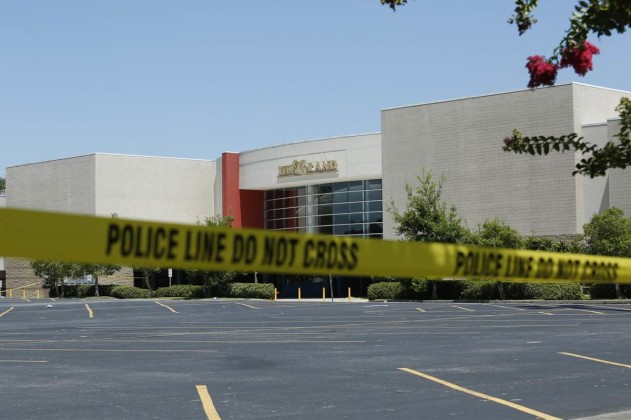Since we have been thwarted in our attempts to stop mass shootings, we need to start figuring out how to minimize their damage.
By eerie coincidence, the 204th mass shooting in the United States this year happened on the 204th day of the year. For every time the sun rose over America, there has been one incident in which “four or more people are shot in an event, or related series of events, likely without a cooling off period.”
It is time for us to face the truth: We are not going to get any sort of meaningful gun control any time soon. Of course, we will keep lobbying. But we need to stop holding our breath and hoping that gun control will be in place in time to save our loved ones from a mass shooting.
The simple fact is that if mass shootings continue at their current rate, many of us are likely to be affected. Because unlike what the media and gun advocates have led us to believe, these are not freak events that are so rare we don’t need to worry about them happening to us. They have become so common that news coverage of one often overlaps with coverage of another, and a website keeping track of them is updated every five minutes.
We live in a society where every public space can become more dangerous than a Wild West saloon at any time and without warning. Since we have been thwarted in our attempts to stop mass shootings, we need to start figuring out how to minimize their damage.
Mass shootings have created a whole new category of trauma victims that are unlike other survivors in ways that may be significant. We need experts in trauma to train everyone from first responders to school psychologists on the unique needs of mass shooting survivors.
We need to start, however, by fixing our broken definition of who is a victim in a mass shooting. If you read press accounts or look at statistics about mass shootings, they talk about victims as the people who were injured or killed. For reasons that I cannot fathom, we do not count the physically unharmed victims of a mass shooting.
Physically unharmed victims have experienced the primal horror of being hunted by another human being who was slaughtering other human prey right in front of them. People who are subject to that kind of psychological torture deserve to be counted among the victims, and they need our support.
The first thing we can do to help surviving victims is to stop using terms like “cowardice” or “bravery” when we talk about the actions of mass shooting victims. Let’s be very clear about this: There is no right way to survive a shooting spree.
No victim shares any part of the blame for what happens in a mass shooting. They do not owe us any explanation of how they reacted, and we shouldn’t ask for one.
To be prepared for when, not if, a mass shooting occurs, we need to train adults and kids in what actions to take to improve their chances of survival.
But before we can do that, we need to hear from experts who have actually studied mass shootings about what survival strategies are the most successful. For example, in a theater, I would imagine getting low might help, but is that true in a classroom? When is playing dead likely to work?
Of course, the research necessary for those resources will take a while. In the meantime, we need to start training ourselves to be aware of our environment. For example, I read that someone was able to save a lot of lives by pulling a fire alarm in a mass shooting. Do you know where the fire alarms are located in the public places you frequent?
Theaters and churches can help by taking their cues from airlines. They can make friendly announcements at the beginning of every movie or service explaining where the exits and alarms are located, pointing out any additional safety features like a safe room or seats that could deter bullet penetration.
Our buildings are built to protect people in the event of fires, earthquakes, and other disasters. Architects should include the threat of mass shootings into their designs for new buildings, especially spaces with a high concentration of sitting people like theaters, schools, and churches. For example, can we design the location or configuration of exits in ways that make it harder for shooters to pick off people trying to flee? Of course, it goes without saying that every new classroom should be built with a safe room large enough for every student and teacher.
Parents need to know how to educate our kids about mass shooting in language that they can understand, and that makes them cautious but not paranoid or panicked.
Children’s writers need to create books for different age groups that introduce the subject and give safety information in reassuring ways. Yes, I am actually saying that we need books like “The Day the Bad Man Came To Sesame Street.”
No one wants to live in the world as I described it. And it would be so much better and easier if we could just employ the same preventative measures that have worked so well in other countries and end mass gun violence once and for all.
But we cannot stop helping people just because our preferred solution is being blocked. Our job as decent human beings should be to minimize the suffering of others where we cannot eliminate it. It is time to start doing that job.
Lynn Beisner writes about family, social justice issues, and the craziness of daily life. Her work can be found on Role Reboot, Alternet, and on her blog: Two Parts Smart-Ass; One Part Wisdom. You can find her on Facebook and Twitter.
Related Links:

